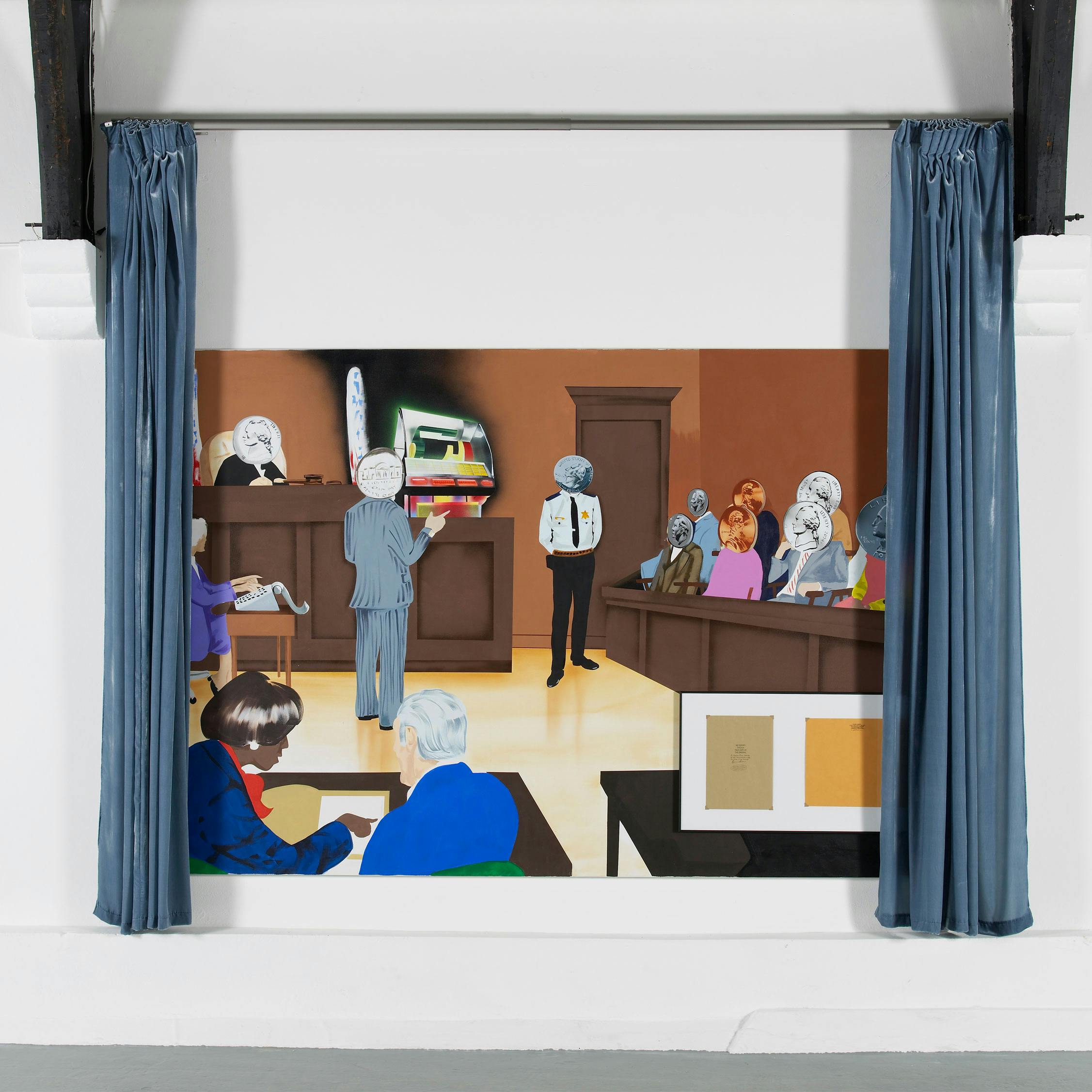A major new commission by Jamian Juliano-Villani (b. 1987, New Jersey), the artists’ first solo presentation in a public institution outside of the US.
Jamian Juliano-Villani’s paintings are composed using an atlas of thousands of appropriated images, personal photographs, and reproductions of existing artworks. The artist wryly refers to her compositions as ‘arranged marriages’ – an eighteenth century ukiyo-e Japanese woodcut is forced to coexist with a watermarked stock image that may have been snapped and uploaded to Shutterstock a day earlier. This imagery is painted, repainted, and edited directly on the canvas; ‘a poor man’s Photoshop,’ or an almost masochistically longhand form of collage that is at odds with the speed at which we consume images today. The resulting paintings are anxiety filled images that are simultaneously prosaic and surreal.
For her commission at Studio Voltaire, Juliano-Villani presents new large–scale paintings alongside never before exhibited sculptural installations. In one painting, an immediately recognizable, orange bumpered LaCie hard drive is thrown down a long corridor on the Titanic; the hard drive projecting memories of failed painting attempts and threatening memories from the artist’s childhood in suburban New Jersey. In another, an Olympic swimmer, cauled in the surface tension of the pool’s water, is being forced to play the recorder – a cheap, plastic version of the flute, often given to middle schoolers as an introduction to sheet music.
Alongside this series of new paintings, Juliano-Villani presents a pair of sculptures, marking a new development in the artist’s practice. A 1955 J-L Seeburg jukebox has been modified to mimic the audio used in binaural therapy to relieve anxiety and stress, also called ASMR. The recording, which features the distorted voice of the artist’s mother, satirizes the budding genre of homebrewed ASMRtists who upload YouTube videos meant to trigger calming sensations.
Affective and angst ridden, filled with moral dilemmas and personal visions, Juliano-Villani’s works can all be read as self-portraits. Her use of familiar images and objects questions her own subjectivity and that of her audience – the things we know, or thought we did, take on new and often ominous meanings.
“It’s good to know how to read, but it’s dangerous to know how to read and not how to interpret what you’re reading.” – Mike Tyson











